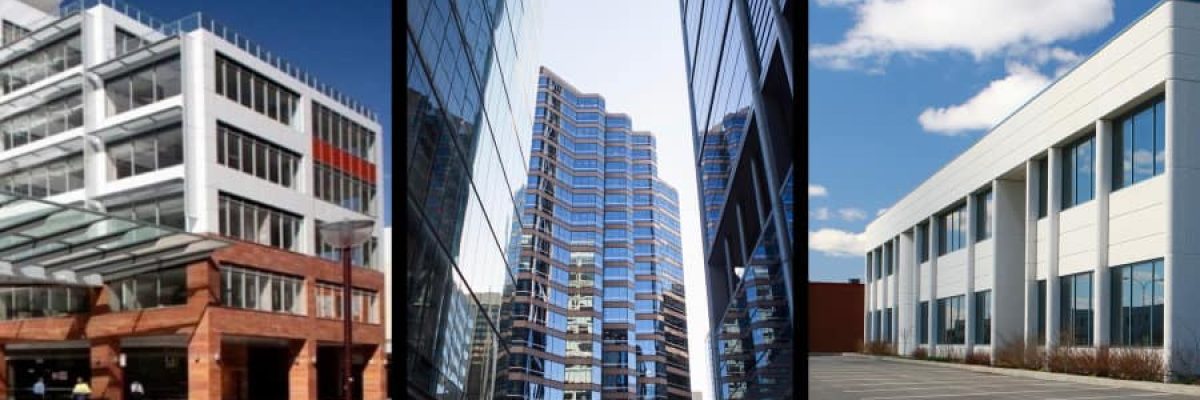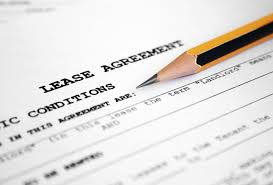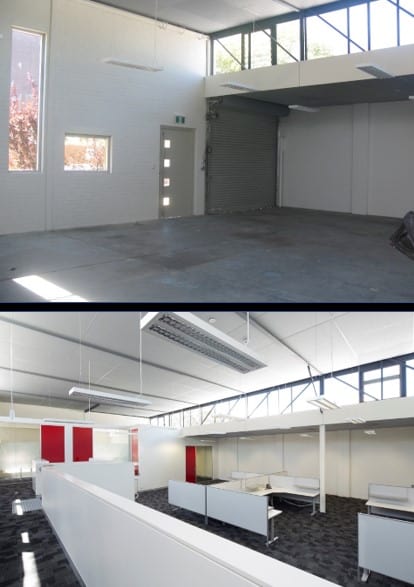
PROPERTY SELECTION
It is important to identify premises that provide sufficient space for current and future operations, access for staff and clients, cost effective fitout and maintenance and with lease provisions that will allow for the optimal ongoing operation of the business.
Lease Considerations
Term of Lease and Options to Renew.  Typically initial lease term and option periods are offered from three to five years; however, they are open to negotiation. You should consider terms corresponding with the maturity of the business. i.e. A start-up business could have shorter terms such as one year initial term with two year options (1+2+2…) compared to a mature business which, for example, could have a five year initial term with ongoing five year options.
Typically initial lease term and option periods are offered from three to five years; however, they are open to negotiation. You should consider terms corresponding with the maturity of the business. i.e. A start-up business could have shorter terms such as one year initial term with two year options (1+2+2…) compared to a mature business which, for example, could have a five year initial term with ongoing five year options.
Rent and Rent Reviews. The Western Australian economy is primarily based on the resources sector, and is therefore subject to the cyclical nature of this sector. Similarly, the Perth office rental market is cyclical in nature. Business owners should be wary of rent reviews that have a “ratchet” clause i.e. rents that increase automatically, above CPI and do not allow for reductions in rentals during market downturns.
Outgoings – Rent does not usually include outgoings. Significant additional costs may be incurred through payment for utilities and other outgoings related to the upkeep of the premises.
Lease incentives – Landlords may offer lease incentives such as lease holidays (rent free periods at the commencement of the initial lease term), rental abatements and/or contributions to the office fitout costs. Incentives are often available when the vacancy rate is high.
Redevelopment Clause. Security of tenure can be compromised if the landlord/owner is permitted to include a redevelopment clause. Such a clause should be resisted if possible or, at the least, delayed until after the first option period. Whilst it must be accepted that the landowner may wish to redevelop a property, moving a business is expensive, inconvenient and avoidable. It is advisable to seek a lease in a property that is not subject to any planned redevelopment.
Sublease and/or Assignment. There should be a clause allowing the assignment and/or subletting of a lease to allow for contingencies of your business. Retail leases are more highly regulated under the Commercial Tenancy (Retail Shops) Agreements Act 1985 and accordingly, “reasonable grounds” are required for a landlord to withhold consent to assign a lease. Regardless of the type of business, inclusion of a clause allowing assignment and sub-letting is strongly encouraged.
Permitted Use. In addition to local council and state government land use and zoning considerations (below), the landlord/owner may place restrictions on the nature of business conducted within a building and/or lease area. Such restrictions can include a prohibition of a business competing with existing tenants. For retail businesses it is recommended to include an “exclusivity of trade” clause to prevent future tenants from being direct competitors and adversely affecting your ongoing business. Ensure the business can operate and, if required/planned, expand and diversify operations within the parameters of the lease.
The Western Australian Small Business Development (SBDC) website has more detail and additional considerations at: SBDC Commercial Leases
Size and Location
Space Planning. The trend from enclosed private offices to open plan offices or activity based workstations has resulted in offices that are smaller and more cost effective to fitout and maintain. Although the total areas may be reducing, in accordance with Australian Standards, there is a requirement for a minimum of 10m2 per occupant with an average of 15m2. The TKO Office Fitout Calculator is a handy tool for preliminary investigations into the floor area and indicative cost to fitout an office.
Accessibility. Getting to and into a premises is an important consideration. Proximity to public transport and parking for staff and visitors should be available. Note that planning laws dictate that the number of car parks required is based on the type of business so if a change of the type of business occupying a building occurs then the number of car parks required may also change. If insufficient parking is available then additional car parks or “payment in lieu” of car parks may be required. This can be a significant additional cost.
In multistory buildings you may want to consider if the lifts are adequate to service the number of organisations/personnel in the premises and/or the floor you plan to locate your business.
Disabled access is now a requirement for office blocks, education facilities, retail outlets, entertainment venues and buildings used for commercial activities.
Future Expansion. Ideally, your business should occupy premises that allow for future expansion. Such expansion could either be into adjacent areas or, for multi-story buildings, on floors above or below the initial lease area.
Location. The best location for your business will take into consideration the balance between costs and proximity to/availability of:
- walk in customers and clients in general
- competitors
- suppliers,
- public transport
- parking for staff, contractors and clients.
Zoning/Land Use
Councils operate under differing Town Planning Schemes which have differing zoning categorisations and requirements. This can be a concern, for example, when planning to convert a warehouse to an office space. You should investigate that the proposed use of a new rental property does not contravene the local zoning or health regulations by checking with the local council and state government departments such as the Health Department, Department of Planning and Infrastructure, WA Planning Commission, Department of Main Roads; and heritage registers. The local council should be aware of any heritage or state government legislation/planned activities/restrictions in relation to the proposed use of a lease area; however, this is not always the case.
Additionally, a business licence may be required.
Building Condition/Infrastructure
 and (potential) heritage listing of a building/lease area should be considered in relation to both initial fitout cost and ongoing maintenance costs. Some of the areas to look at closely are:
and (potential) heritage listing of a building/lease area should be considered in relation to both initial fitout cost and ongoing maintenance costs. Some of the areas to look at closely are:
Electrical. The pre-lease inspection should include:
-
- Wiring
- RCD
- Lighting
- Power supply – are these adequate for the new business?
Ceiling. In addition to the general condition of the ceiling, aesthetics and services such as air conditioning need to considered. If, for example, (additional) air conditioning/heating needs to be installed then a suspended ceiling may be the most effective means of accommodating the ducting and outlets.
Floor Coverings. Hard wearing floor coverings are required for high traffic areas. The existing floor coverings may be suitable in such areas; however, it is common to include new floor coverings in a total office fitout.
Window Treatments. Although most fitouts involve replacing the existing window treatments, there would be a significant cost saving if the existing treatments are suitable for the colour scheme and design of the new fitout.
Kitchen. Does it have provision for a dishwasher, coffee machine, water filter etc? The age and condition of the hot water system should be investigated to ascertain whether a new system will be required.
IT/Data – Can the existing network be re-used or does is a new network required? Is there fibre to the lease area if required?
Air Conditioning. Has the existing system been well maintained? Is it adequate for your requirements? How old is the system? Air conditioning is often the tenants’ responsibility and can be expensive to modify or replace.
Watertight. A significant number of fitouts are compromised by the building not being watertight. A small leak can spread a long way from the original source of the leak and be very difficult to track down.
General Amenity. Talking to existing and previous tenants to discuss issues such as noise, the maintenance program, air-conditioning and building management can be enlightening.
